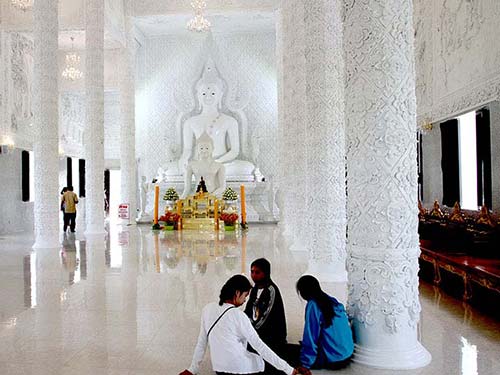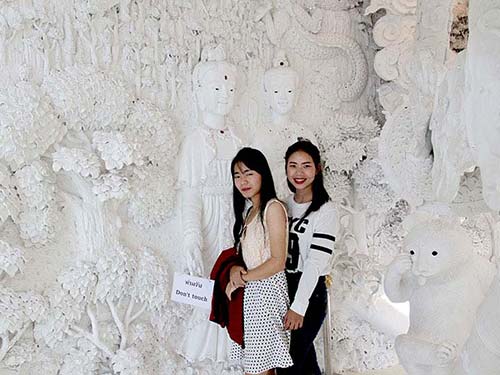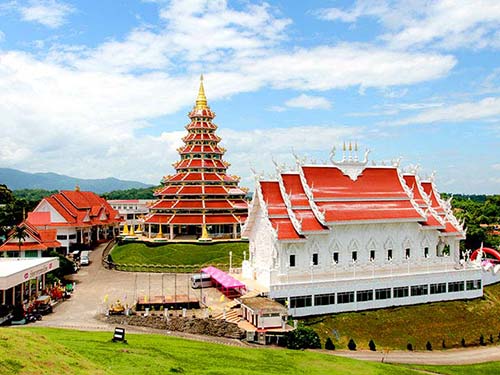Chiang Rai was founded in the 13th century and was the first capital of the dynasty of King Mangrai.
For centuries it was ruled by the Burmese, but since 1933 it has been the capital of the province with the same name in the Thailand Kingdom.
Table of Contents
What Chiang Rai offers you and when to visit it
This is the northernmost province of Thailand, bordering Laos and Myanmar, 860 km from Bangkok. Its capital is a typical Thai city in which the Night Bazaar and the central square of the clock stand out.
On the other hand, the province offers a splendid nature, a history of legend and the hospitable hill tribes, always ready to share their home and make your trip unforgettable. A different universe and a great plan, combining activities related to nature with cultural exchanges between new friends.
Now we approach the city of Chiang Rai and in another article the province of Chiang Rai.

The best time to visit Chiang Rai begins with the end of the monsoons from November to mid-February, when the burning of the fields causes the atmosphere to begin to be less clean and the forests a little drier due to the lack of rain, until May.
Nevertheless, the interest of the Golden Triangle and the Hill Tribes remain, since in those months it is precisely when the entry of the new year is celebrated in many of their communities (from February to April). An opportunity to participate in a unique moment that is worth sharing.
In the monsoons (from May to October) keep in mind that the probability of rain increases, pay attention to the weather forecast and be careful with the dirt roads. Nature will be gorgeous, the forest with intense greens and the streams full of water.
The rice fields will have a lot of life since this is their season.
Chiang Rai has an airport with good air links to Bangkok, from where you can also travel at night by bus, preferably by S-VIP bus (24 seats) for an 11 hours trip or so.
It also has a good connection with Chiang Mai, buses depart from 06h00 to 17h30, on a journey of 200 km that lasts approximately 3 hours, Greenbus.
Wat Phra Kaew
This royal temple is very famous because the Emerald Buddha was found here, besides being currently a recognized centre of Buddhist education and for the administration of the community of monks in the north of the country.
Clock Square
The clock square can be considered as the center of the town and at dusk offers a show of music and lights really surprising, it is a bit kitsch but nobody should miss it.
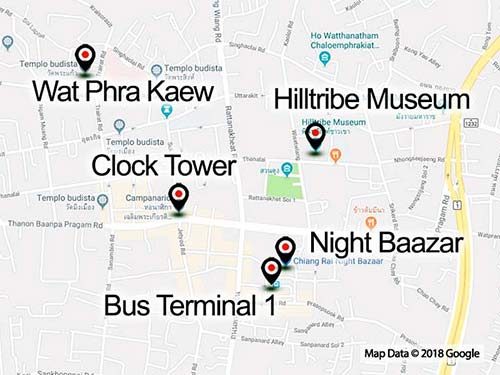
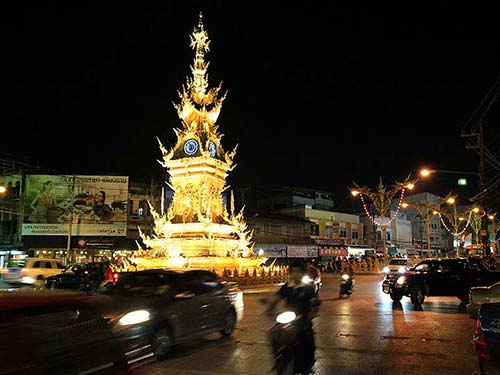

Night Bazaar
Small and cute night bazaar to spend the evening: have a drink, dine and buy some gifts. A nice walk before going to sleep to wake up early the next day.
Museum of the hill tribes
It is a small museum that shows images and objects of the different hill tribes that live in the province, with informative panels about their daily life and culture. Interesting if these tribes are part of your trip.
Saturday Walking Street
Popular market among the local public and holiday visitors.
Apart from being very kind, the Thais have a good sense of humour so do their best to enjoy life (sanuk), like everyone else, probably. Among other things, they love dancing. It happens at village street parties during popular festivals. A fun way of seeing Thailand close-up.
Watch the images about this fun weekend market if you are curious, click here.
Wat Rong Khun, the White Temple
A strange temple that mixes universes apparently alien to each other. The contemporary artist Chalermchai Kositpipat is creating it since it is not finished yet. Visually, it’s a striking place.
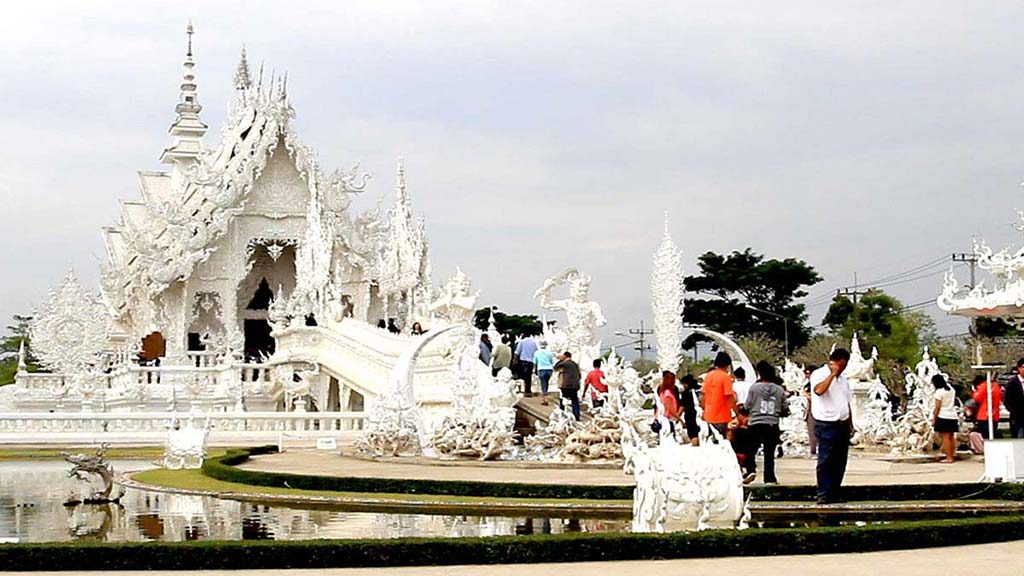
Once the work of the artist is exposed, it is open to different interpretations depending on what it evokes to each observer.
In any case, the visit to this fascinating temple is an opportunity to perceive one of the fundamental differences between Animism and Buddhism, precisely, how they understand human behaviour and its consequences.
Read more about it in this post.


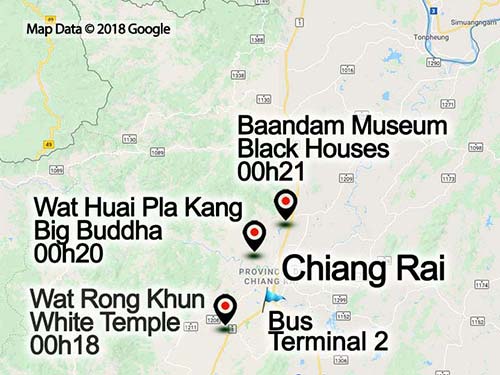
Wat Rong Suea, the Blue Temple
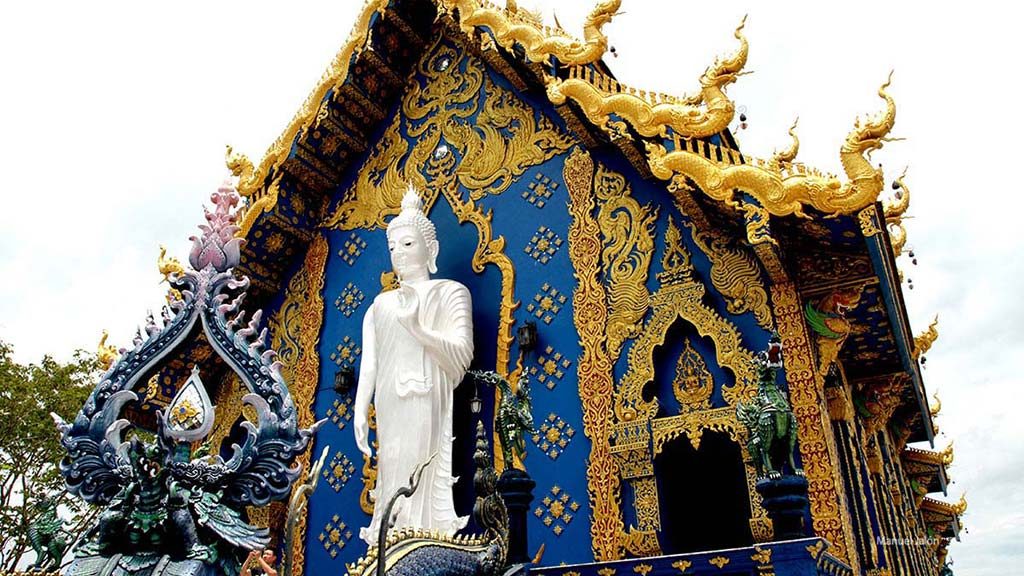
This is a very colourful temple due to the intense dominant blue, whose name means dancing tiger.
It has the typical elements of a Buddhist monastery, but due to a good marketing job and the favourable location, it has become a fashionable visit.
You will find it outside the city but within walking distance, just after the bridge over the Kok River.
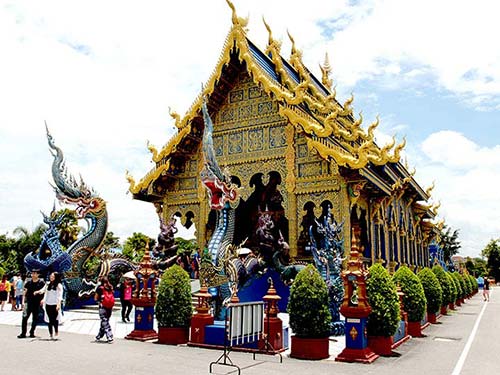
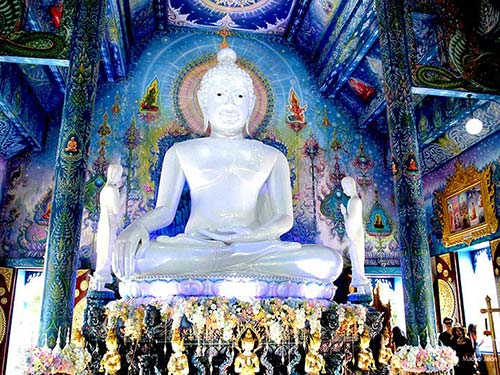

Baan Dam, the Black Houses

Baandam is the work of the well-known artist Thawan Duchanee and combines some 40 buildings, made of wood, bricks, glass and terracotta, with traditional and modern designs in a quite intriguing mix. Baan means house and Dam means black.
They also house works of art made with animal bones, horns and furs, among other materials. Open from 09h00 to 17h00.
The break with the traditional canon and the iconographic density are very striking, but difficult to understand without the help of an expert who contextualizes the artistic work and helps interpret its possible meanings. They often become a simple set for taking selfies.


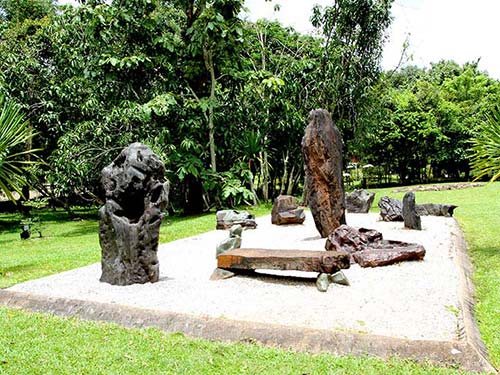
Wat Huai Pla Kang, the giant white Buddha
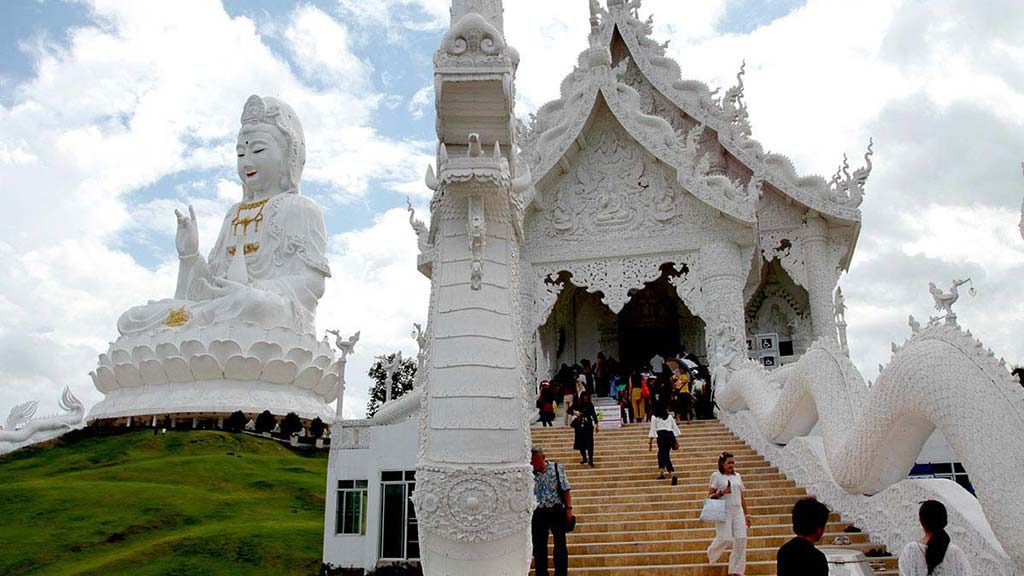
Buddhist complex where a huge Buddha statue stands out and is visible from a distance. She is not exactly a Buddha but a Bodhisattva, that is, a person who has attained the enlightenment but has decided to postpone entering nirvana to help other people on earth. She is a Bodhisattva of Compassion or Guanyin, the Divinity of Mercy, very popular among the Chinese community in Thailand.
Through an elevator inside the statue, you can go up to the upper floors and enjoy beautiful sceneries (40 baht).
The compound includes other curious buildings such as the ultra-white vihan and a nine-story pagoda.
